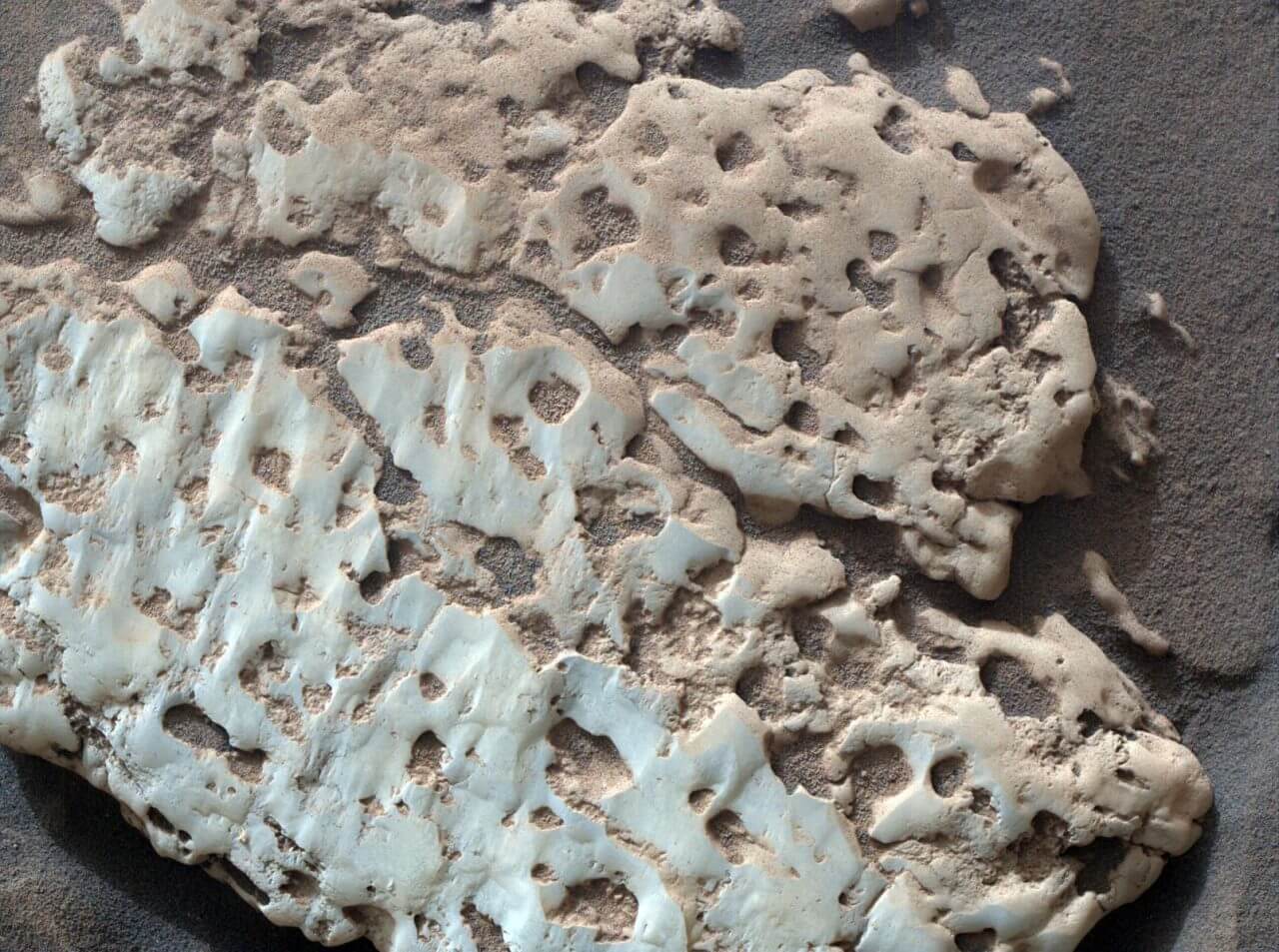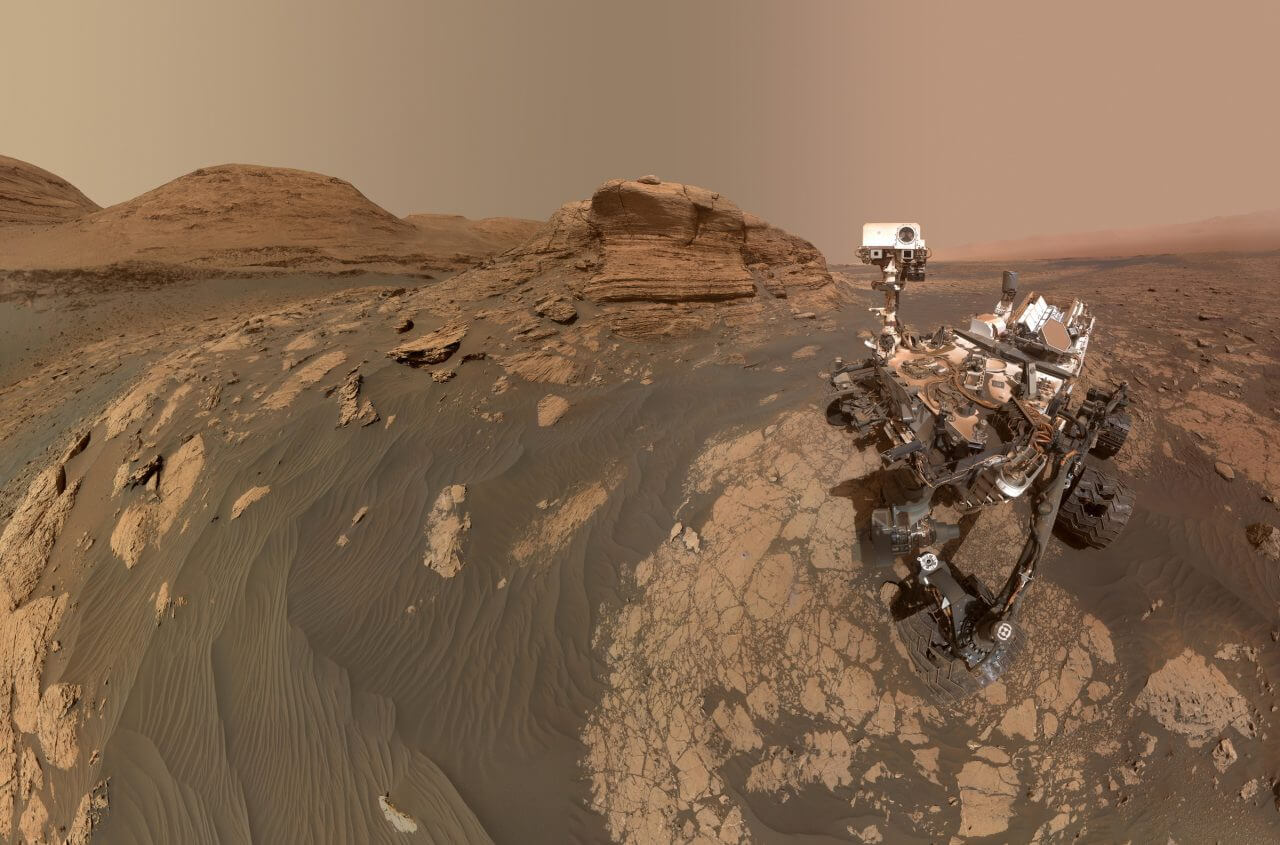This image was taken on June 7, 2024 (Sol 4208 of the Curiosity mission) using the Mastcam camera on NASA's Curiosity Mars rover.※) This is the image taken. Do you see that many yellow stone-like objects appear in the gaps between the rock fragments that are clustered in an area about 13 cm wide?
*1 sol = 1 solar day on Mars, about 24 hours and 40 minutes.

According to NASA's Jet Propulsion Laboratory (JPL), which operates the Curiosity rover, analysis using the Alpha Particle X-ray Spectrometer (APXS) reveals that the yellow body is a crystal of the element sulfur. Although sulfates, a sulfur-containing compound, were already known to exist on Mars, this is the first time pure sulfur crystals have been found.
According to the Jet Propulsion Laboratory (JPL), this rock cracked and exposed sulfur crystals when Curiosity hit it on May 30, 2024, about a week after the image was taken. JPL calls the distinctive rocks discovered during its Mars Exploration Mission, and this rock is also called “Convict Lake” after a lake in the Sierra Nevada Mountains in California, USA.


Curiosity landed in Gale Crater (154 kilometers in diameter) on Mars in August 2012. Since 2014, we have been conducting exploration activities as we gradually climb Mount Aeolis (Mount Sharp, about 5,000 meters above the crater floor), which rises in the center of the crater.
-Shepherd's drink-
In February 2024, Curiosity reached an area called the Geddes Vallis Channel. This area looks like the remains of a river that once meandered down the slopes of Mount Aeolis, and the hilly terrain is made up of sediment that accumulated at the bottom. Convict Lake was found in such a location. Similar white rocks are said to be found throughout the area, and they are all thought to contain sulfur. The image below is one of them, called “Ice Lake.”


Gale Crater is thought to have once been a lake. According to JPL, the sulfates found on Mars are thought to have formed when the water dried up billions of years ago, but it’s unclear what process created the sulfur crystals found this time around, and we don’t yet know. The Curiosity operations team is looking for evidence in other rocks and surrounding areas.
“Finding a bunch of rocks made of pure sulfur is like finding an oasis in the desert, because it’s not supposed to be there,” said Ashwin Vasavada, Curiosity’s project scientist at JPL. “We have to explain why we find strange and unexpected discoveries. Planetary exploration is very exciting.”


source
- NASA/JPL NASA's Curiosity rover finds surprise in Martian rock
Text Editing/Editing/Syrian Section

“Travel maven. Beer expert. Subtly charming alcohol fan. Internet junkie. Avid bacon scholar.”






More Stories
The ranking of the best survival horror games selected by the IGN US editorial team has been released! Resident Evil RE:2 ranked first
Enjoy a hot cigarette while looking at whales and tropical fish under the sea ⁉︎ “Ploom Dive” is an amazing spatial video experience using Apple Vision Pro
Apple Watch now supports sleep apnea, watchOS 11 released – Impress Watch